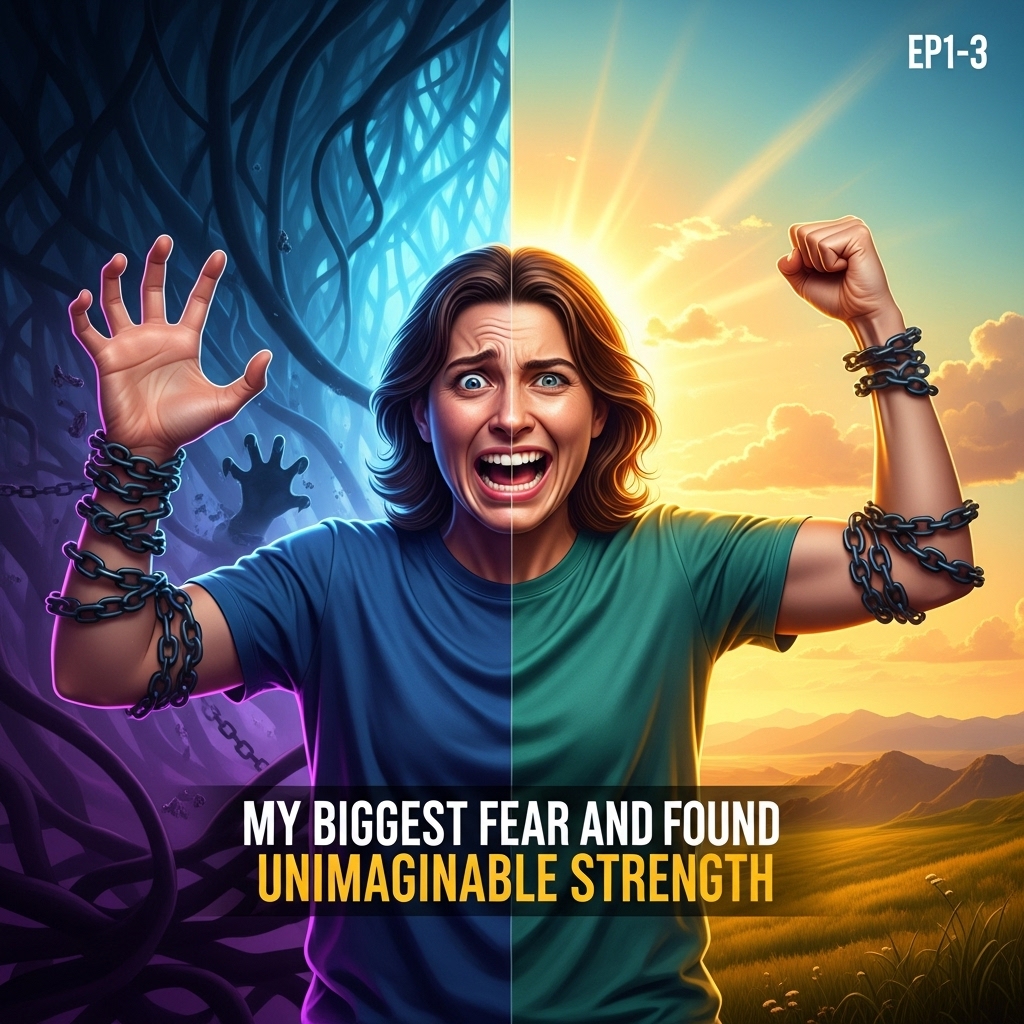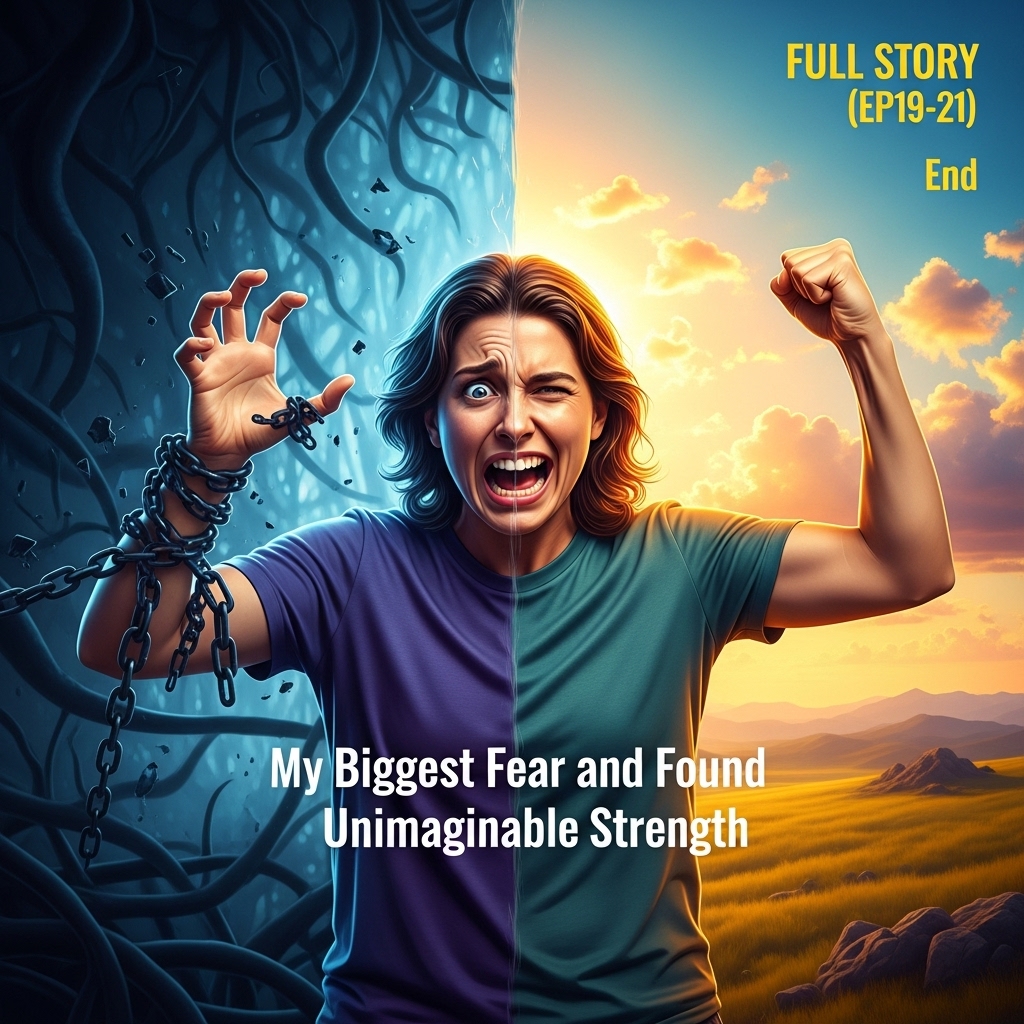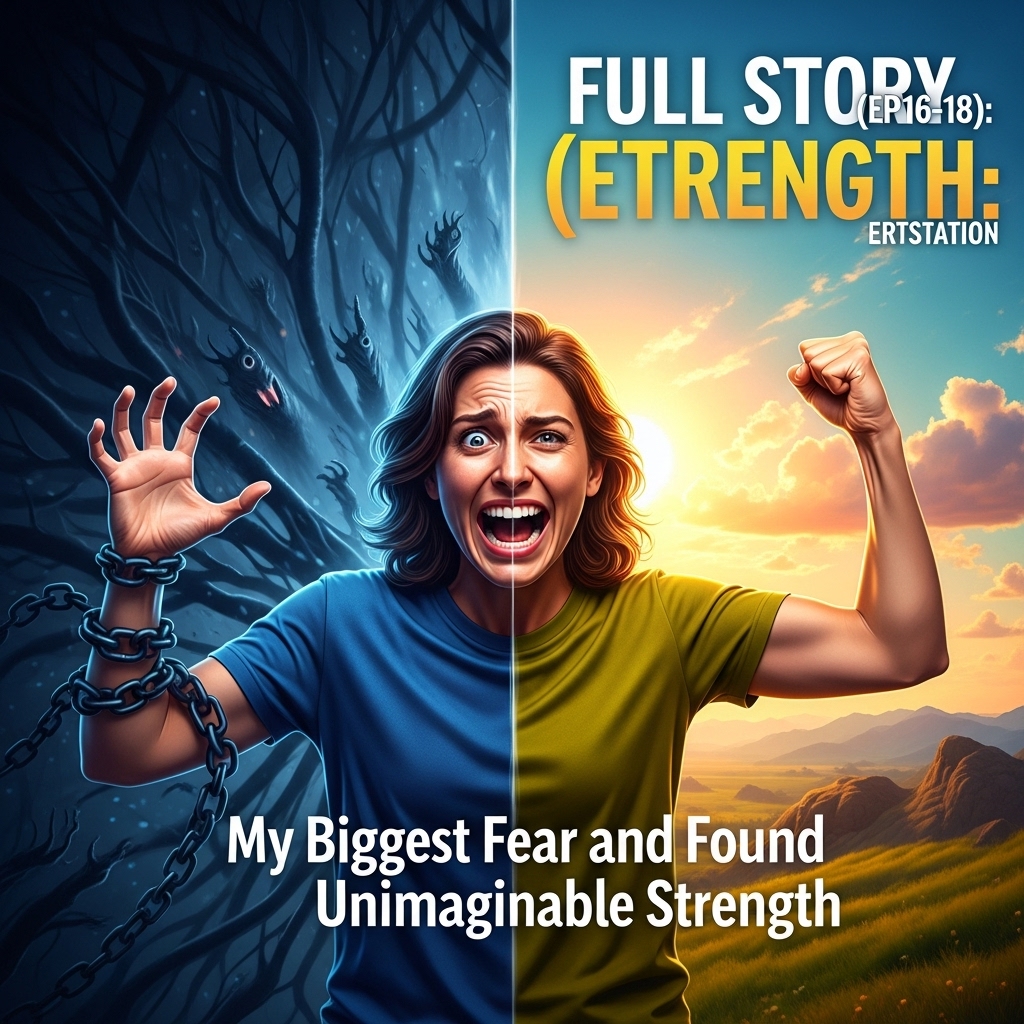Part 1
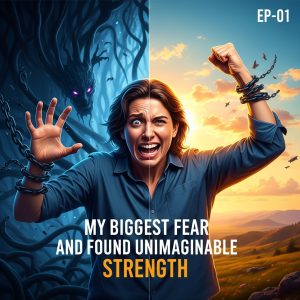
Imagine a moment where your heart races, your breath catches, and a paralyzing dread washes over you. Not because of a monster in the dark, but because of something you *know* is irrational, yet it holds you completely captive. For me, that feeling was a constant shadow, dictating every step, every choice, for years. It was my deepest, most embarrassing secret, and it felt like an unbreakable chain around my soul.
Hello everyone, and welcome back to the channel. Today, we’re diving into the deeply personal journey of how I confronted that very shadow, my biggest fear, and ultimately found unimaginable strength within myself. I guarantee you, by the end of this story, you’ll not only understand the true power of facing your fears, but you might just find the courage to begin your own transformation. If you’re ready to unlock that inner resilience and explore what lies beyond your comfort zone, do me a huge favor and hit that subscribe button right now so you don’t miss any more stories of human triumph. Alright, enough reflection. Let’s go back to where it all began, to the moment that fear first took root.
Understanding the Shadow: Identifying and Defining the Deep-Seated Fear
You see, for the longest time, I couldn’t even name it. It wasn’t a phobia I could easily articulate, like a fear of heights orspiders, though I’ve known people who bravely navigate those particular landscapes of anxiety. No, my fear was more insidious, more pervasive, like a fog that seeped into every corner of my existence. It lacked a simple label, makingit all the more difficult to explain, and therefore, all the more isolating. It was a fear of… *discomfort*. Not just any discomfort, mind you, but a very specific kind, one that involved a certain level of sustainedsocial interaction, particularly in unfamiliar or structured environments. I’ve come to call it, for the purpose of understanding and ultimately confronting it, a profound fear of “being seen struggling” in a social or performative context, combined with anintense anxiety around prolonged, unavoidable interaction where I felt I couldn’t simply *disappear*.
Imagine, if you will, the subtle hum of a refrigerator in an otherwise quiet room. You don’t notice it at first, butthen it becomes a low, constant presence, always there, just beneath the surface of your awareness. That’s how this fear operated within me. It wasn’t a sudden, acute panic attack most of the time, though those certainlyweren’t strangers to me. Instead, it was a chronic, low-level dread, a constant negotiation with myself about whether I could endure a particular situation.
Let’s get a little more specific, shall we? This wasn’t merely shyness. Shyness, to me, always felt like a quieter disposition, a preference for observation over participation. My experience was far more visceral. It manifested as a physical tightening in my chest, a sudden, inexplicable difficultyin drawing a full breath. My palms would grow clammy, a faint tremor might start in my hands, and a peculiar fuzziness would descend over my thoughts, making it hard to concentrate, to form coherent sentences, or to simply *bepresent*. My heart, already a diligent worker, would decide to double its efforts, pounding against my ribs as if trying to escape its confines. My stomach, a sensitive barometer of my internal state, would clench and churn, often leading toa distinct feeling of nausea. These sensations weren’t just unpleasant; they were alarming. They were my body screaming “danger” at a situation my rational mind knew was perfectly safe, even mundane.
For example, a simple dinner party withpeople I didn’t know well could trigger this cascade of physical reactions. The anticipation alone was often worse than the event itself. Hours before, I’d start mentally rehearsing conversations, imagining scenarios, and invariably, picturing myself failing– stumbling over words, saying something awkward, or simply running out of things to say and being left in a silent, agonizing spotlight. When I finally arrived, the initial greetings would be stiff, my smile forced, and my eyes would dartaround, searching for an exit strategy, a familiar face, or simply a corner where I could blend into the wallpaper. The longer the event stretched, the more intense the physical symptoms became. I’d feel an overwhelming urge to flee, to findsolitude, to simply *stop* performing, because that’s what it felt like: a performance I was ill-equipped to deliver.
The “struggling” aspect was paramount. I could tolerate being seen, even being observed, if I felt competent, prepared, and in control. But the moment I perceived I was faltering, that my mask of composure was slipping, or that I was failing to meet some unspoken social expectation, the fear would amplify exponentially. It wasa fear of vulnerability exposed, of my perceived inadequacy being laid bare for others to witness. This isn’t to say I believed people were actively judging me in a harsh, critical way. Often, the judgment I feared most was my own,projected outwards. I believed others *would* see my struggle, and in turn, I would confirm my own deepest conviction: that I was somehow fundamentally flawed in social settings.
This fear cast a long shadow over my life, subtly reshapingmy choices in ways I didn’t fully comprehend until much later. Career paths were narrowed. Opportunities for advancement that required public speaking or extensive networking were quietly sidestepped. I gravitated towards roles where I could work autonomously, where mycontributions were judged on tangible output rather than my ability to charm a room or command attention. My social circle, while precious and deeply valued, remained relatively small and consisted mostly of individuals with whom I felt entirely comfortable, where there was no need forthe “performance.” Introducing new people into that circle, or venturing into new social territories, felt like scaling a sheer cliff face.
Travel, something I deeply longed for, was often curtailed by this fear. The thought of navigating unfamiliar places, relying on strangers, or being thrust into situations where I couldn’t control the environment or the interactions, was profoundly unsettling. I remember once planning a trip to a vibrant, bustling city, only to find myself overwhelmed by anxiety a weekbefore departure. The image of being lost in a crowd, unable to communicate effectively, or simply feeling out of my depth, triggered such a strong wave of physical symptoms that I almost cancelled the entire journey. It took immense willpower, and thereassuring presence of a trusted friend, to push through that initial resistance. Even then, my experience of the city was often filtered through a lens of apprehension, always on the lookout for potential social pitfalls.
The insidious nature of this fear wasthat it often disguised itself. It would masquerade as “not being interested” in a particular event, or “being too busy” for a social gathering, or even “preferring quiet nights at home.” And while I *do* cherishmy quiet time, these excuses became a convenient shield, protecting me from confronting the discomfort I dreaded. Over time, these small evasions compounded, slowly but surely shrinking my world. The walls of my comfort zone grew higher and thicker, and I becamean unwitting prisoner within them.
Part 2

It wasn’t just about avoidance. There was an immense amount of internal labor involved in managing this fear. Before any potentially challenging social situation, my mind would become a battlefield. I’d meticulously plan mywardrobe, not for fashion, but for comfort and a sense of invisibility. I’d arrive early, if possible, to scope out the room, identify potential allies, and mentally map out escape routes. During conversations, I’d oftenfind myself splitting my attention: one part of me listening and responding, another part constantly monitoring my body for signs of distress, analyzing my performance, and scanning the faces of others for any hint of judgment. This constant vigilance was exhausting, likerunning a marathon in slow motion, every single day.
One of the most frustrating aspects was the feeling of isolation. How do you explain to someone that attending a casual barbecue or participating in a work meeting feels akin to facing a firing squad? How doyou articulate the sensation of your mind going blank when you’re expected to contribute to a discussion, not because you lack knowledge, but because your nervous system has hijacked your cognitive functions? It felt embarrassing, shameful. I believed that if peopletruly understood the depth of my apprehension, they would see me as weak, incapable, or perhaps even ridiculous. So, I became adept at concealing it, at putting on a brave face, at pushing through the internal torment with a plastered smile and rehearsed small talk. This facade, while protective in the short term, only deepened my sense of alienation. No one truly saw the struggle, and therefore, no one could truly help.
The internal monologue that accompanied this fear was relentless and cruel. Itwas a constant stream of “What if?” scenarios, always painted in the darkest hues. “What if I trip?” “What if I say something stupid?” “What if I can’t think of anything to say?” “What ifeveryone realizes how uncomfortable I am?” And then, the self-criticism would follow, sharp and unforgiving. “You’re so awkward.” “Why can’t you be more like X?” “This is why you don’t succeed.” This internal negativity wasn’t just annoying; it chipped away at my self-esteem, reinforcing the very insecurities that fueled the fear in the first place. It was a vicious cycle, a self-fulfilling prophecy of dread and perceivedfailure.
The metaphor of the “shadow” truly resonates with me when I think about this period of my life. A shadow isn’t a solid object you can physically touch or fight. It’s an absence of light, a distortion, something that follows you, mimicking your movements, but always a step behind, always a darker, less defined version of yourself. My fear was exactly that. It wasn’t a tangible threat, yet it profoundly shaped my reality. It obscuredmy true self, preventing my genuine personality, my curiosity, my humor, and my intelligence from shining through in situations where it mattered most. It cast a gloom over potential joys, turning what should have been exciting opportunities into dreaded obligations. Itfelt like a constant companion, silently observing, waiting for me to falter, ready to envelop me in its suffocating embrace.
This wasn’t a sudden onset. Looking back, I can trace its subtle beginnings to early childhood experiences, moments of feeling singled out, misunderstood, or ridiculed for what felt like innocent mistakes. A clumsy moment in a school play, a forgotten line during a presentation, a misinterpreted comment that led to laughter at my expense – these seemingly minor incidents,when accumulated and amplified by an impressionable young mind, began to weave the fabric of this deep-seated anxiety. Each instance added another thread, strengthening the pattern of avoidance and self-consciousness. By the time I reached adolescence, the patternwas deeply ingrained, almost instinctual. It wasn’t something I consciously chose; it simply *was*.
And yet, despite its pervasive grip, there was always a part of me that yearned for freedom. A quiet whisper, a persistent longingfor a life unburdened by this constant apprehension. I would watch others effortlessly navigate social situations, speak with confidence, and embrace new experiences, and a profound sense of envy, mixed with admiration, would stir within me. I wanted thatease. I wanted that liberation. I wanted to experience the world without this heavy cloak of fear. This yearning was the first, faint glimmer of light, the initial crack in the walls of my self-imposed prison. It was the callto action, the unspoken question that began to echo in the quiet corners of my mind: “Can I truly live like this forever?” “Is there another way?”
At first, my attempts to understand or categorize this fear were clumsy and largelyineffective. I’d read self-help books, hoping for a magic bullet, a quick fix. I’d try to rationalize my way out of it, telling myself, “It’s just a dinner party, you’re beingridiculous.” But logic, as I quickly learned, holds little sway over a deeply entrenched emotional response. The fear wasn’t amenable to intellectual arguments. It was a primal, gut-level reaction that bypassed my rational brain entirely. I’d attempt exposure therapy on my own, forcing myself into uncomfortable situations, hoping that sheer willpower would override the anxiety. Sometimes it worked, for a brief, exhausting moment, but more often than not, it backfired, reinforcing the fear and solidifying mybelief that these situations were, indeed, inherently threatening. Each “failure” felt like a further confirmation of my inadequacy, pushing me deeper into the shadow.
I’d try to define it, to give it a name, but theclosest I could get was a vague sense of “social anxiety” or “performance anxiety,” terms that felt too broad, too clinical, failing to capture the unique flavor of *my* specific dread. It wasn’t just about being nervousin front of people; it was about the fear of *my own internal response* to that nervousness, and the imagined scrutiny that would follow. It was the fear of the physical symptoms, the trembling, the sweating, the racing heart, andthe embarrassment of those symptoms being visible. It was the anticipation of the internal collapse, the sense of losing control within myself, in front of others.
Part 3
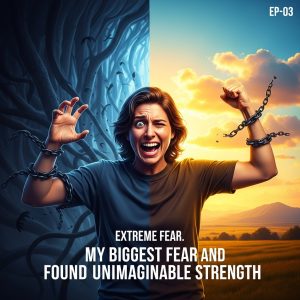
The desire for freedom wasn’t just about attending parties or traveling more. It was abouta deeper, more fundamental liberation. It was about being able to express my authentic self, to connect genuinely with others, to pursue opportunities without hesitation, to simply *be* without the constant hum of anxiety in the background. It was about reclaimingmy own life, which felt increasingly dictated by this unseen, unnamed opponent. The shadow had defined so much of who I was, or at least, who I presented myself to be. And the dawning realization that I was tired of living in itsshade, that I deserved more, was the true starting point of this journey. It was the first, quiet rebellion against the fear, the first whisper of a decision that things had to change. This recognition, this internal stirring, however faint, was the most critical step in beginning to understand the shadow, to peel back its layers, and to ultimately confront its true nature. It was the moment I stopped merely *having* a fear and started to truly *see* it as somethingseparate from myself, something that, perhaps, could be understood, challenged, and eventually, overcome. And it was this initial, difficult act of identification that paved the way for everything that followed.That initial, difficult act of identification, the simple yet profound acknowledgment that I was *having* a fear, rather than *being* defined by it, was the first whisper of light in what had long felt like an impenetrable darkness. Butseeing the shadow, truly seeing it, immediately brought with it another, even more unsettling question: *Where did it come from?* This wasn’t a sudden affliction, not a lightning bolt striking from a clear sky. This was somethingwoven into the very fabric of my being, or so it felt, and to understand it, to even hope to dismantle it, I knew I had to trace its delicate, often insidious threads back to their very beginning. I had to embarkon a journey into my own past, a journey that would uncover not only the genesis of this fear but also the surprisingly intricate ways it had been reinforced, nurtured, and ultimately, made to feel like an inescapable part of me.
It’s tempting to imagine that we are born as blank slates, perfectly poised and fearless. But the truth is, we arrive with a unique temperament, a predisposition, and then the world begins its intricate work. For me, the first subtleseeds of this particular dread weren’t sown in a dramatic, traumatic event, but rather in a series of small, seemingly insignificant moments, like droplets of water slowly eroding stone, each one contributing to a gradual, almost imperceptible shift.
I canrecall, even now, fragments from early childhood that, in hindsight, gleam with a new, somber clarity. I was a quiet child, observant, perhaps a little more sensitive than average. I remember the hushed tones of adults, the subtle cues that suggested certain emotions were best kept contained. Not that my parents were harsh or unloving, quite the opposite. But there was an underlying emphasis on politeness, on not making a fuss, on being “a good boy.” This wasn’t an explicit command, but rather an atmospheric pressure, a gentle leaning towards conformity and quietude. A child’s mind is a sponge, absorbing not just words, but the unspoken anxieties, the subtle energies of the environment.I learned very early on that drawing too much attention, especially negative attention, was to be avoided. A dropped glass, a spilled drink, a boisterous laugh at the wrong moment—these were often met with a quick, quiet “shhh” or a look that, while not angry, conveyed a distinct sense of mild disapproval. In a small child’s universe, where parental approval is the sun around which all else orbits, these small moments create ripples.
Consider, for example,the simple act of performing for relatives. Many children delight in singing a song or reciting a poem for their grandparents. I recall a distinct internal resistance to it. The warmth of the living room, the expectant smiles, the gentle encouragement—foranother child, this might be exhilarating. For me, it was a sudden spotlight, a moment where the full weight of external gaze felt crushing. My voice would become small, my body stiff. I remember the sensation of my cheeks flushing, a preludeto the trembling I would later come to know so intimately. If I stumbled over a word, or forgot a line, the embarrassment was swift and sharp, disproportionate to the actual event. It wasn’t just the mistake; it was theimagined judgment, the fear that their smiles would subtly shift, that the warmth would recede, replaced by a polite pity. Even as a very young child, this fear wasn’t about the *performance* itself, but the internal chaosit stirred, and the potential exposure of that chaos. It was the genesis of fearing *my own response* to the moment, and the visibility of that response to others.
Then came school, that grand stage where every child is thrust intothe unpredictable drama of social interaction. Here, the subtle threads began to weave into a much denser tapestry. I vividly recall an incident in elementary school, perhaps second or third grade. It was “show and tell.” A simple, innocent ritualfor most. For me, it was a weekly dread. Each Sunday night, the weight of Monday morning’s show and tell would settle upon me, heavy and cold. My chosen object, no matter how carefully selected, always felt inadequate, my explanation destined to be clumsy.
On this particular day, I had brought a rather unremarkable rock, painted with faint, swirling patterns by some obscure natural process. I had envisioned a captivating description of its geological origins, perhaps even a dramatictale of its discovery. But as I stood before my classmates, their young eyes fixed on me, the words evaporated. My throat tightened, a familiar constriction. My heart began to pound a frantic rhythm against my ribs. I remember looking down at therock, then up at my teacher, Mrs. Davison, whose smile, usually so kind, now seemed to hold a hint of impatience. And then, it happened. My hands began to tremble, almost imperceptibly at first, butthen with increasing intensity. The rock, no longer a majestic specimen, became a heavy, vibrating object in my grasp. A ripple of whispered laughter moved through the class, a quiet, almost sympathetic titter, but to my ears, it wasa roar. One boy, a particularly boisterous character named Billy, pointed and said, “Look, he’s shaking!”
Mrs. Davison, bless her heart, tried to intervene, “Billy, that’s enough!”But the damage was done. The spotlight, already too bright, had intensified, illuminating my internal turmoil for all to see. The flush on my face burned, my eyes welled up not with tears of sadness, but of pure, mortifying shame. I mumbled a few incoherent words, thrust the rock into Mrs. Davison’s outstretched hand, and scurried back to my desk, my head bowed low, praying for invisibility. The memory of that burning face, the trembling hands, the whispered laughter, became a brand, seared into my young psyche. It wasn’t just a bad experience; it was *proof*. Proof that my inner world was volatile, proof that it could betray me, and proof that others wouldsee it, and perhaps, judge it.
